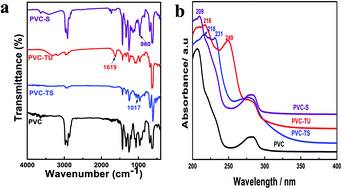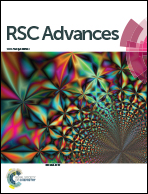Chemical modification of poly(vinyl chloride) for blood and cellular biocompatibility†
Abstract
Poly(vinyl chloride) (PVC) was modified with three different ionomers including thiosulphate, thiourea and sulphite for improving the biocompatibility of the polymer. All ionomers were prepared by nucleophilic substitution using a phase transfer catalyst method. The modified forms of PVC were characterized using ultraviolet-visible (UV-Vis) spectroscopy, Fourier Transform Infrared (FTIR) spectroscopy, scanning electron microscopy (SEM) and thermal gravimetric analysis (TGA). They were found to be less stable thermally compared to the untreated polymer. The biocompatibility of the polymers was evaluated by assessing their wettability via contact angle measurements and by performing hemolysis and thrombogenicity assays. Their cellular biocompatibility was evaluated by assessing their adhesion and proliferation, and by carrying out cytotoxicity assays and nuclear staining. The results reveal that modification of the polymer with the specified ionomers significantly enhances the bio- and blood-compatibility properties.


 Please wait while we load your content...
Please wait while we load your content...